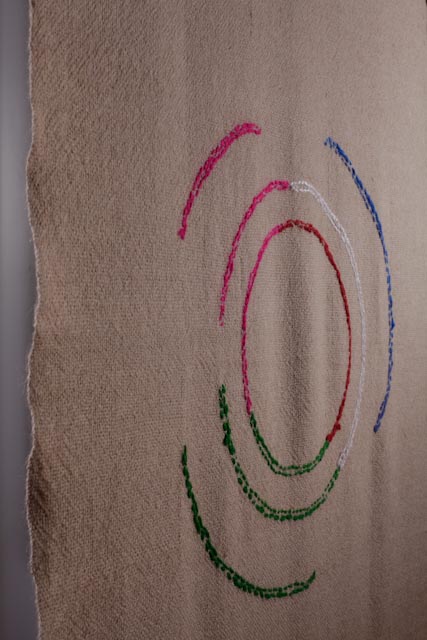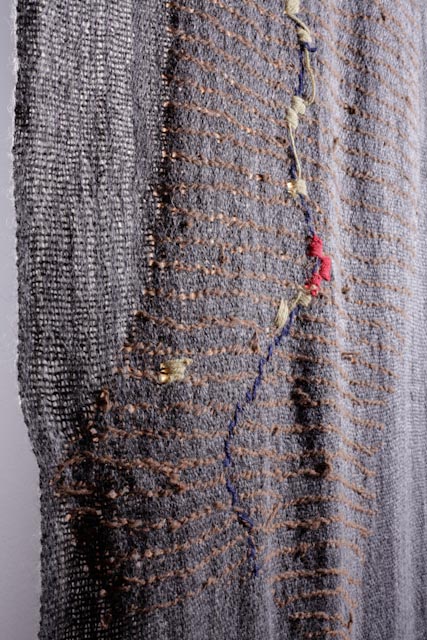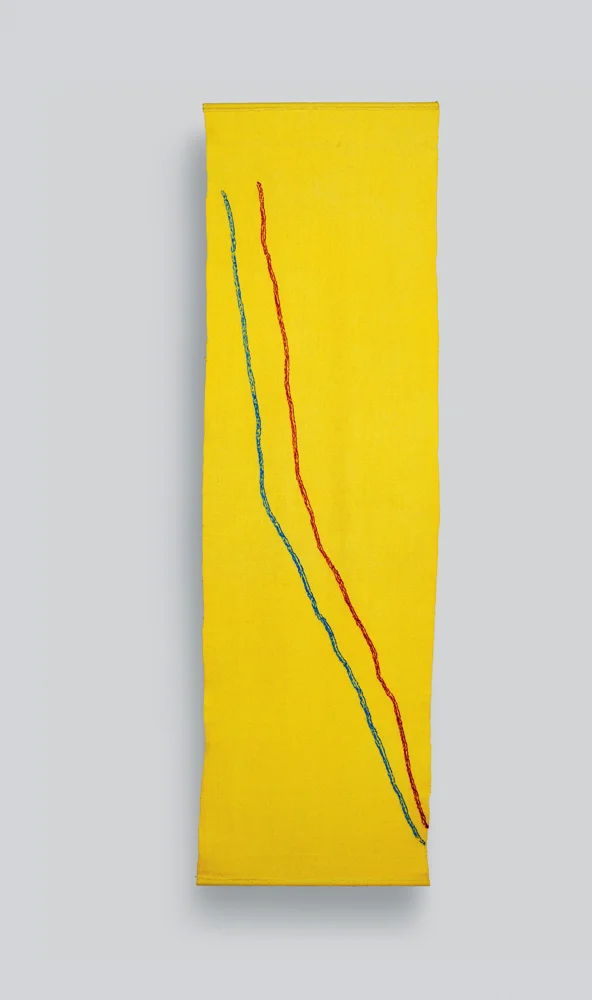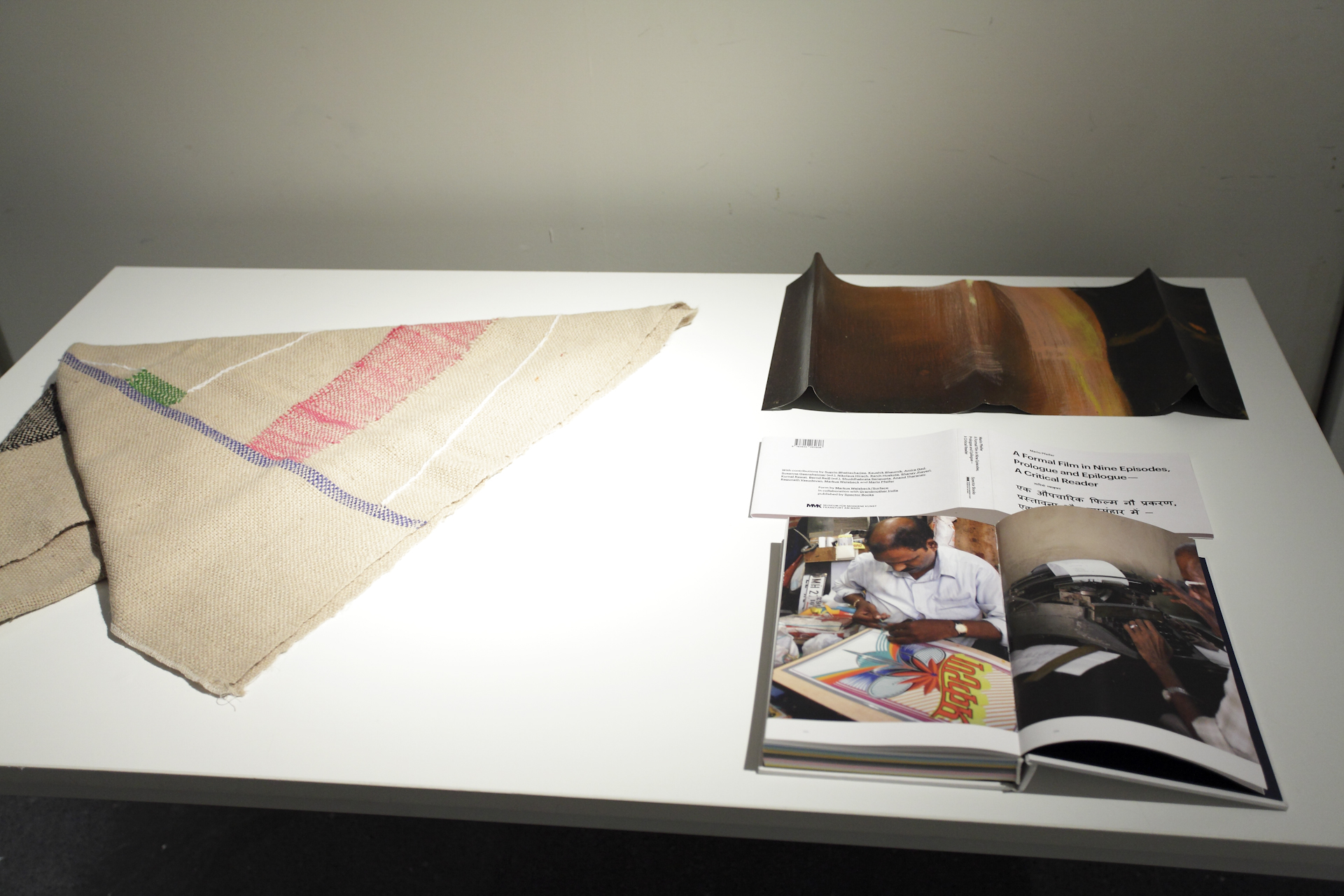Textile Works
Galeria Macchina – Universidad Catolica
November 18 – December 30, 2014
Opening reception and lecture November 18, 2014, 6–9pm
Textiles Works represents Mario Pfeifer’s latest project conducted in the Tarapacá region in the north of Chile. Through on-site investigations in the town of Camiña, Mario Pfeifer takes the Aymara textile production as a point of departure for a conversation about the aesthetic, social, economical, and religious issues present in the indigenous life of the Aymara*.
In the Aymaran oral tradition, traditional textile production remains one of the few visual artifacts that the community produces nowadays. Made of both naturally and chemically dyed llama wool, the designs crafted by Aymara women are more visually inspired than informative. Mario Pfeifer, in conversation with curator, writer, and researcher Rodolfo Andaur, collected statistical materials from different public archives and institutions that document Camiña’s productivity, ethnic variety, and transmigration, as well as the physical destruction caused by mudslides. This information was visualized into digitally created rasters similar to the weaving structures used by the Aymara textile producers.
The information designs are interpreted, adapted, and altered into commissioned weaving by several Aymara textile producers, allowing them to create objects that tell the story of their present situation through a traditional technique in a contemporary remote region.
Through a conversational process these information designs are interpreted, adapted, and altered into commissioned weaving by several Aymara textile producers, allowing them to create objects that tell the story of their present situation through a traditional technique in a contemporary remote region. The presentation of textiles, design drafts, correspondences in image, text, and sound, conversations in Aymara conducted by Rodolfo Andaur, and an 4K video projection are the building blocks of the exhibition at Galeria Macchina.
In the gallery’s upper-floor space, a sound installation composed of a conversation and several music tracks are counterposed with an excerpt from Seth Siegeslaub’s seminal text A Very Speculative but Brief Note on Textiles and Society (1997).
*Aymara refers to the group of individuals who speak Aymara and also to individuals and groups who claim to identify themselves as Aymara. There is no unique subgroup of ethnic Aymara, and Aymara cannot be considered exclusive to any such ethnic grouping. This is because different subgroups such as Qullas, Lupaqas, Qanchis, Carangas, Lucanas, Chocorvos, Chichas, etc. all spoke Aymara from pre-Inca times. Geographically these groups were settled in different parts of the present highlands of Peru and Bolivia with a few in the Arica y Parinacota and Tarapacá regions in Chile. Aymara (Aymar aru) is an Aymaran language, and is one of only a handful of Native American languages with over three million speakers. The Aymara language is an agglutinating and to a certain extent polysynthetic language, and has a subject–object–verb word order. - Rodolfo Andaur
Index
1 Untitled [population by gender]
Llama Wool, 178 x 52 cm
Clotilde Challapa
2 Untitled [damaged houses caused by mudslides]
Llama Wool, 141 x 62 cm
María Chamaca
3 Untitled [population by age]
Llama Wool, 106 x 67 cm
Clotilde Challapa
4 Untitled [agricultural land use]
Llama Wool, 89 x 69 cm
Cecilia Challapa
5 Untitled [income distribution]
Llama Wool, 115 x 77 cm
Clotilde Challapa
A Speculative but Brief Note on Textiles and Society Extract taken from Center for Social Research on Old Textiles and Seth Siegeslaub (eds.), Bibliographica Textilia Historiæ. Towards a General Bibliography on the History of Textiles Based on the Library and Archives of the Center for Social Research on Old Textiles (New York: International General, 1997) p.9. [CSROT 5100] in: The Stuff That Matters, Textiles collected by Seth Siegeslaub for the Centre for Social Research on Old Textiles (eds. Sara Martinetti, Alice Motard and Alex Sainsbury), Raven Row, London, 2012. Reprinted with the permission of Marja Bloem © Stichting Egress Foundation, Amsterdam.
In his multimedia-based projects, Mario Pfeifer scrutinises representational and perceptual concepts of culturally coded and anchored sign systems. The conceptually complex works are based on actual communication structures or socio-political circumstances. They expose a range of materials and information so as to make these simultaneously easily accessible and comprehensible, while examining them with almost scientific meticulousness. In his group of works entitled Textile Works, Mario Pfeifer devotes himself to the pictorial tradition of the Aymara of the Chilean Tarapacá region. This indigenous people has no written characters or writing system: its cultural unity is defined exclusively via oral traditions. Visual information is ‘inscribed’ solely in woven textiles, some of which draw on ancient shape and colour patterns. Ultimately, however, this artisanal form of expression, nowadays mastered by only a few elderly female weavers, is also in acute danger of disappearing through assimilation. Mario Pfeifer takes the increasing silence, and hence the dying-out of the Aymara’s culture as the stimulus for his artwork, obtaining a ‘hearing’ for them in two respects at once. In collaboration with the South American scientist and critic Rodolfo Andaur, the artist digitally generates graphic charts and diagrams on the Aymara’s living conditions – such as their settlement areas, their agricultural lands or population figures according to age and sex – from documents obtained from public institutions.
In close partnership with the artist, traditional women weavers work compositionally unusual textiles according to these templates, in which they pictorially process their current scientifically documented situation in a new sign language. Despite their screaming colours, the works wordlessly declare the decline of traditions and the Aymara’s ethnic group. A video takes on this ambivalence, on the one hand giving an impression of the ‘paradisiacal’ living conditions of the Aymara on an unspoilt patch of earth beyond high-tech civilisation, on the other hand, showcasing the meagre living conditions and the colourlessness of the landscape. Both in the weavings and in the drawings, all threads of the de facto situation as well as of the intra- and intercultural attempts at interpreting the Aymara culture run together. Hanging as warning signs on the wall, the artworks urge an immersion in the abstract lines and colour fields as well as the visualisation of civilisation’s densely interwoven levels of meaning.
[Franziska Scheurer in Disegno, Kerber Verlag, 2015]
Installation Views: Kupferstichkabinett, Staatliche Kunstsammlungen, Dresden, 2015
Selected Press
Arte Al Alimite, February 2015
"Mario Pfeifer Times Two"
Simon Badilla in conversation with Mario Pfeifer on his Chile projects
Sächsische Zeitung, November 2015
Am Anfang war die Linie, am Ende der Wind
Birgit Grimm on Disegno, Staatliche Kunstsammlungen Dresden
Related Exhibitions
Textile Works / Taxi Stickers
One Night Only Gallery - Kusnternes Hus, Oslo
January 12, 2015
Solo Exhibition curated by Fadlabi




















